About phpMyAdmin
The phpMyAdmin is a tool written in PHP to handle the administration of MySQL over the web. Databases must be created in cPanel or Plesk. Still, phpMyAdmin can drop databases, create/drop/alter tables, delete/edit/add fields, execute any SQL statement, manage keys on fields, and export/import data into various formats.
Please click on the links below to jump to a section:
Want to Know More About phpMyAdmin? Please Watch Our Tutorial Below:
What Are the Basic Functions of phpMyAdmin
Accessing Databases
- cPanel - You can access your databases via your cPanel's phpMyAdmin. For instructions on how to access phpMyAdmin in cPanel, please refer to this article: How To Access phpMyAdmin from cPanel.
- Plesk - You may want to see the directions on how to manage your databases via Plesk's Webadmin in this article: How To Access Webadmin.
- Root WHM on a VPS or Dedicated Hosting - VPS or Dedicated hosting users may also access phpMyAdmin by navigating to WHM's SQL Services section.

Creating Databases and Users
Before you can get started using phpMyAdmin, you must first create your database through the following sections:
cPanel's MySQL Databases
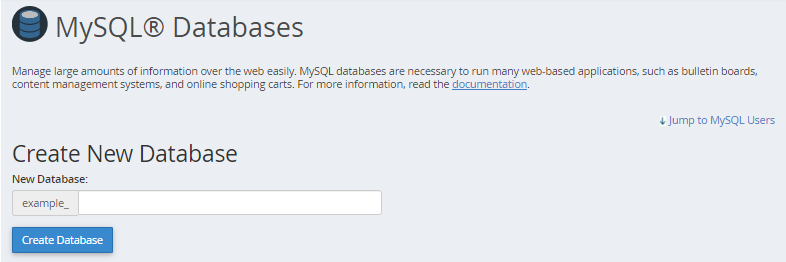
Plesk's Databases
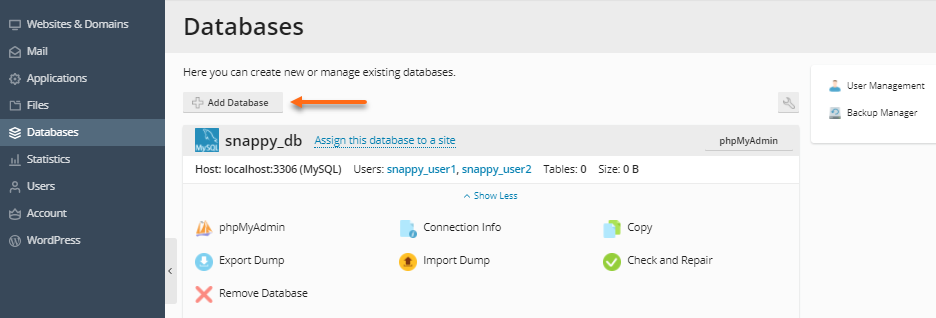
Selecting Databases
To view the structure of your databases, simply click on the database name in the left column of the home page.
Clicking on the name of the database shows the structure of the database. The structure shows individual table names which make up your database.
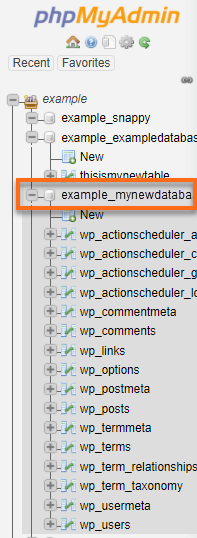
Browsing Databases
Once you have selected a database, you can browse each table by clicking the Browse link besides the table name while in the Structure view.
The Browse view displays rows of data within the database (if applicable). There is also a link to Create PHP Code based on the current view. You can also navigate through the rows of data by clicking the > or >> buttons or choosing a page number from the dropdown box.

Executing SQL Queries
Using the Structure and Query tabs of the phpMyAdmin allows you to run multiple queries with semicolons separating the different queries.


Viewing MySQL Processes
You may view the current MySQL processes by selecting the SQL tab and running the command:
SHOW PROCESSLIST
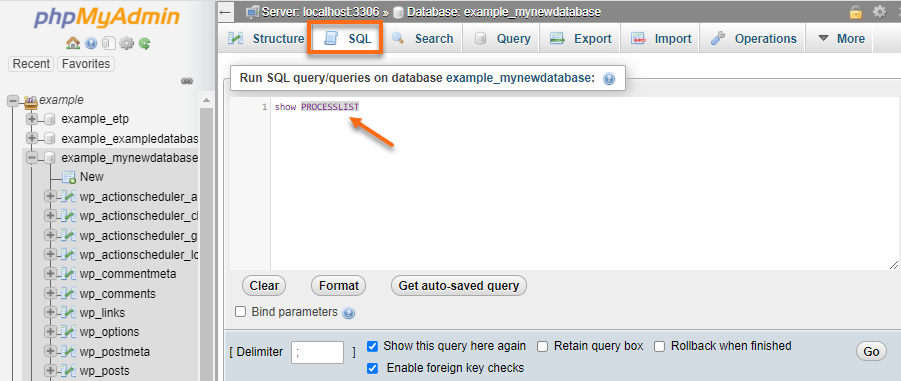
To kill a process, click the kill link to the left of the process ID number.
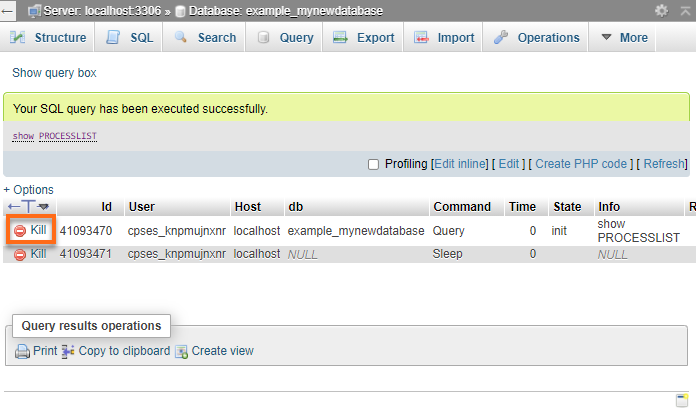
Performing Operations
Using phpMyAdmin's Operations tab, you can perform different operations on your databases like creating tables, renaming and removing databases, and copying databases.

Guides to Common Functions in phpMyAdmin
Searches & SQL Queries
Using phpMyAdmin, you can execute queries to manage your databases, like renaming, updating, and retrieving data.
You can do a quick search for information in your database without running advanced queries. Here are helpful articles that will help you perform these tasks.
Database Functions
Many actions can be performed in phpMyAdmin to manage your databases. Among them are moving databases from one server to another and simple actions like renaming and copying databases. Here are helpful articles that you can refer to.
- Import a MySQL Database
- Export a MySQL Database
- Rename a MySQL Database
- Copy a MySQL Database
- Merging Two MySQL Databases
- Optimize a MySQL Database
- Repair a Broken Database
Manipulating Tables
Manually running queries to manage database tables can be a little overwhelming and confusing. To set up your table structure, the phpMyAdmin tool can assist you quickly and easily.
- Add Tables to a Database
- Rename Database Tables
- Drop (Delete) Database Tables
- Maintain Database Tables
- Analyzing Sizes of Database Tables
Manipulating Columns
Databases are made up of tables containing rows and columns. Managing these columns is a necessary step to having a functioning database.
You may visit our Database Overview page to see more article links regarding database management.
To know more about common database errors, please refer to this article.